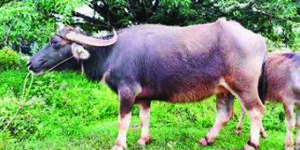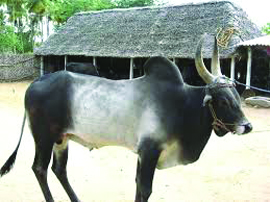CHENNAI, DEC 23
Population of indigenous cattle in the State has come down by 6.65 lakh between 2012 and 2018. During the same period exotic cattle population registered an increase of 13.21 lakh. If one goes by the data of 20th Livestock Census, over one lakh indigenous cattle disappear in the State every year. Number of native cattle breed population in 2018 was 18 lakh as against a population of 24.59 lakh in 2012.

According to The New Indian Express, the population of buffaloes also declined from 6.6 to 5.18 lakh. While dairy farmers attribute ‘non-viability’ as the reason for the dwindling population of native breeds, animal activists charged that reducing cattle merely to a ‘milk yielding animal’ will lead to the privatisation of milk industry in another few years which would destroy the cultural character of this region.
MG Rajendran, general secretary, Tamil Nadu Milk Producers’ Welfare Association (TNMPWS) said that a crossbreed cow can deliver a calf within 285 days after pregnancy. During that time, till one day before the delivery date, the cow yields 14 to 16 litres of milk a day. But, the native cow produces six to eight litres a day with much less lactation time. Farmers migration to artificial insemination using exotic breed semen began in 1980s with an objective to increase milk production. Disassociation with native breed grew further later.
“Announcements regarding sale of native breed semen remain only on paper. For the past few months, many farmers who approached animal sub-centres for ‘Red Sindhi’ semen for artificial insemination have not been given the semen,” he said.
Karthikeya Sivasenapathy, managing trustee of Senaapathy Kangayam Cattle Research Foundation, said unlike most western countries where milk production is completely industrialised, in our State cattle breeding is linked with culture and livelihood of rural people, particularly women. The government should take genuine efforts to preserve the native breeds, he said.
A Gnanasekaran, Director of Animal Husbandry and Veterinary Service, said, last year alone the government distributed about 2.5 lakh semen straw of ‘Red Sindhi’ native breed to farmers for artificial insemination.
“About 1.5 lakh semen straw of Kangeyam Pulikulam and Alambadi breeds produced at Hosur Cattle Farm had been distributed. About 2,000 Umbalachery breed semen produced at livestock farm at Korkai also been given to farmers. More native breed semen and sexed semen being distributed and all efforts are taken to increase the population in a few years.”
Animal husbandry officials also claimed that native breed decline can be confirmed only after knowing breed-wise data in the census, which is yet to be released.
Activists say farmers should be given incentives for preserving native breeds
Between 2007 and 2018, desi breed population reduced by 20 lakh. Activists say farmers should be given incentives for preserving native breeds.
Courtesy: The New Indian Express












